
The Charger Blog
Charger Blogger: Quarter-Life Crises and Figuring It Out as We Go
Beatrice Glaviano ’26 shares her take on getting older, the grind of college, and remembering to have a life outside of it all.
The Charger Blog
Olena Lennon, Ph.D., an adjunct professor of political science at the University of New Haven, reflects on her trip to Armenia in June as part of The Organization for Security and Co-operation in Europe (OSCE) Election Observation Mission to observe early parliamentary elections. She discusses her role in the mission, visiting Armenia, and what she learned, as well as how she plans to draw on her experience in the classroom.
July 8, 2021
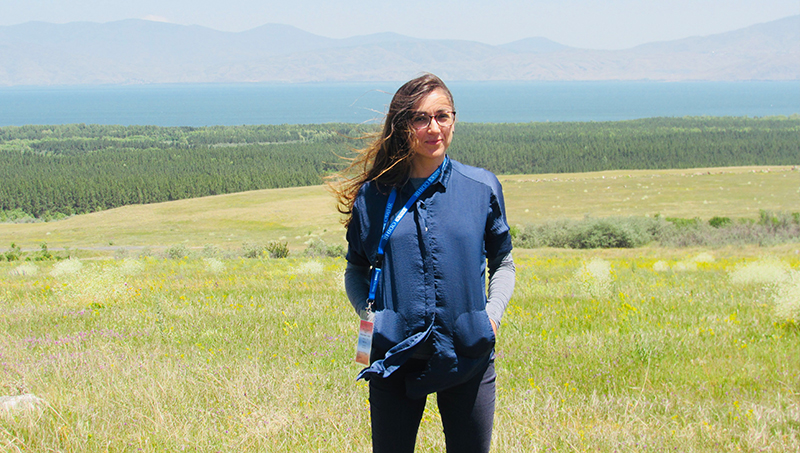
Renee Chmiel: How did you become part of the Organization for Security and Co-operation in Europe (OSCE) Election Observation Mission in Armenia?
Dr. Olena Lennon: Organization for Security and Co-operation in Europe (OSCE) comprises 57 countries, and each of them has its own process for selecting, training, and deploying election observers for OSCE/ODIHR (Office for Democratic Institutions and Human Rights) missions. In the U.S., the Department of State has designated an organization called PAE that selects and deploys U.S. citizens as part of Rapid Expert Assistance and Cooperation Teams (PAE-REACT) to seconded-election observation opportunities.
I applied for secondment through PAE-REACT to observe elections in the Republic of Georgia last year. I was selected, but unfortunately, the mission was canceled due to the COVID-19 pandemic. I reapplied to observe early parliamentary elections in Armenia this year, and I was selected again. This was the first OSCE/ODIHR election observation mission that included both short-term and long-term observers after a year-long break.
It is worth noting that the OSCE limits the number of observers from any one participating country to 15 percent of the total number of observers to ensure geographic diversity among observers. So, I was one of only 38 American observers deployed to Armenia by PAE-REACT.
RC: Being a part of these missions is prestigious and competitive. What did it mean to you to be a part of the mission?
OL: It is prestigious and competitive to be a part of OSCE election observation missions, and it was an honor to have been selected.
For me, the most meaningful aspect of my role of an election observer was an opportunity to engage with the Armenian people, and to signal to the Armenian public that we are not indifferent to their efforts to build a more prosperous and free country, which begins with well-functioning democratic institutions. Fair and transparent elections are one of the most sacred pillars of a well-functioning society.
By being there to observe the process, I hoped to reinforce the importance of fair elections, facilitate an environment of professionalism and transparency, and encourage civic engagement. I think if people have a higher confidence in democratic processes, they might be more encouraged to participate and hold themselves (and others) to higher professional standards.
One of the most memorable conversations I had on this trip was with a Territorial Election Commission (TEC) chair who shared with me that, in the many years he has done elections, he noticed that the presence of observers greatly improved the work ethic and a sense of responsibility on the part of local staff. It was reassuring to hear that.
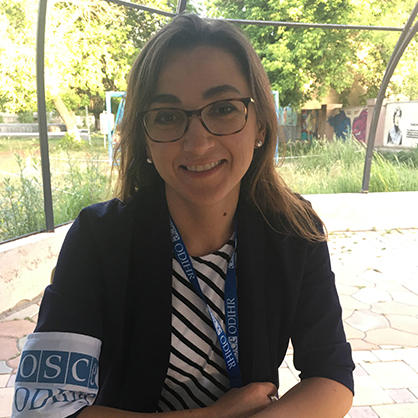
RC: What were you and your colleagues hoping to achieve on this mission?
OL: It is important to realize that OSCE/ODIHR deploys international election observers only on the request of a host country. In other words, it is in the interest of host governments to have international observers to improve their country’s electoral processes and increase the validity of the election’s results. The goal of OSCE is to support governments in those ambitions by conducting an independent assessment of the extent to which elections respected national electoral laws, political pluralism, voting rights, transparency, and accountability.
With that in mind, in our official roles as observers, we are simply the eyes and ears on the ground. We record and report what we see and hear, based on predetermined criteria. We are not there to enforce the country’s electoral law, give advice, or correct any observed violations. Our mandate requires absolute non-interference in the process, including abstaining from any evaluative comments to the media or on social media.
On several occasions, local election staff would follow us out of a polling station and ask, “How did we do?” I always had to make it clear that we were not there to evaluate the Precinct Election Commission or any of its individual members’ performance. We were only there to observe and report our findings through appropriate channels. But of course, in that role, and during that process, we also signal our support for a fair and transparent election.
In terms of what we were hoping to achieve, first and foremost, our main responsibility was to fulfill specific election observation duties as outlined in the OSCE’s Code of Conduct. OSCE relies on accurate reporting from short-term and long-term observers dispersed throughout the country to provide a comprehensive evaluation of the election. To that end, our main goal as observers was to report accurate, detailed data that would contribute to an objective and impartial assessment of the entire election.
A bigger goal underlying those specific objectives was to contribute to the Armenian public’s and the international community’s confidence in the electoral process and results.
RC: How did the mission go?
OL: As far as the official evaluation of the mission, OSCE/ODIHR held a press conference and published an official statement the day after the election, stating that Armenia’s early parliamentary elections “were competitive and well-managed,” despite being characterized by “intense polarization” and “inflammatory language from key contestants.”
For me personally, the mission was a great success, as I received all the necessary logistical, informational, and security support to carry out my duties effectively. I was also lucky to have been paired with an experienced counterpart from France. In addition to specific mission accomplishments, I appreciated meeting a great many wonderful people from all over the world, and making new friends, with whom I look forward to staying in touch.
RC: What about your participation was most rewarding?
OL: The most enjoyable part of the trip was engaging with local Armenians and learning more about their history and culture. Growing up in Ukraine and later living in the U.S., I had previously been exposed to Armenian diaspora communities, and I always thought that I had a fairly good understanding of their history and culture. This was my first trip to Armenia proper, and my preconceived ideas about the country were quickly challenged, which I couldn’t have been happier to learn.
While I do not speak Armenian, between speaking English and Russian, I was fortunate to always have a common language with local residents of any age, which afforded me the joy of deep, meaningful conversations. I particularly enjoyed my conversations with young Armenians (recent college graduates) and learning about their aspirations for independent Armenia despite its long, tragic history with foreign empires.
I was also grateful for the long driving trips across my observation area in Gegharkunik Province, which not only exposed me to breathtakingly beautiful views, but most importantly, allowed me to have many great conversations with my driver, and to learn of Armenian realities through his eyes. My driver hailed from the area close to Nagorno-Karabakh and knew many families that had lost their sons, brothers, husbands, and fathers in the Second Nagorno-Karabakh War in the fall of 2020.
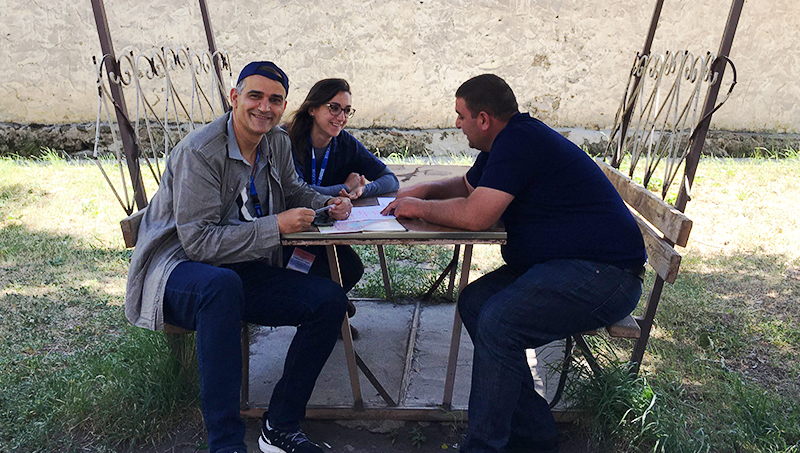
While driving in the area, I saw many murals on residential buildings depicting soldiers who died in 2020. Many soldiers were born in the 2000s, and many did not have a chance to defend themselves and their cause, as they were killed by unmanned aerial vehicles. It was another reminder that as much as new technology has changed the character of war, it has not changed the nature of war – it is violent, interactive, and fundamentally political (thus, avoidable).
It is incumbent on all of us to be frequently reminded of the human faces of war and the irreversible damage wars cause to societies, for generations to come.
RC: What did you enjoy the most about your visit to Armenia?
OL: I was lucky to have been assigned to observe in one of the more picturesque areas of Armenia, in Gegharkunik Province, surrounding Armenia’s largest lake, Lake Sevan. The views of the mountains and the lake were stunning. Additionally, I got to eat plenty of famed Armenian whitefish (siga) and trout from Lake Sevan.
At the conclusion of the mission, we had some time to explore other parts of the country. One of the most memorable places I visited was Garni Castle, the only standing Greco-Roman building in Armenia, believed to be built in 77 AD, in pre-Christian Armenia.
One of the first things one learns about Armenia is that it was the first country to adopt Christianity, in about 300 AD. Armenia is permeated with beautiful ancient churches, monasteries, and cathedrals, symbolizing the long and often tragic history of Christians in the region.
In general, I found Armenians to be immensely proud of their history and cultural heritage. That pride seems to bind the country together, even at times of extreme political polarization such as during the elections.
RC: As a political science professor and expert, why was it so meaningful to you to have taken part in this mission? What did you learn from it?
OL: Prior to the trip, I followed the events in the region rather closely, especially given the new round of hostilities that erupted between Azerbaijan and the self-proclaimed Republic of Artsakh (supported by Armenia), in the disputed region of Nagorno-Karabakh in September 2020.
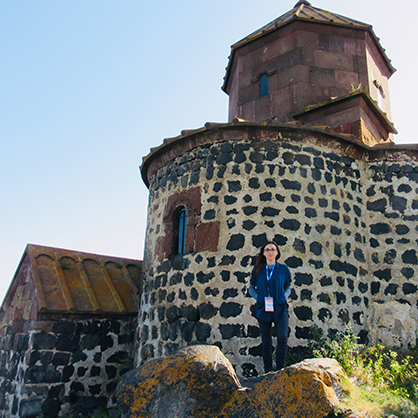
The renewed hostilities resulted in more than 5,000 casualties on both sides and tens of thousands more displaced by the fighting. As a result of a Russia-brokered armistice, Armenia agreed to withdraw its military from Nagorno-Karabakh, as well as Lachin, Kelbajar and Agdam, the three adjacent areas where Armenians previously held land. In short, the outcome of the war was widely seen as a crushing defeat for Armenia.
Here in the West, we often analyze distant conflicts from the point of view of lessons learned for the West. Conversations about the Second Nagorno-Karabakh War were permeated with analyses of advanced military technologies and their application in decision-making and war fighting. In particular, many experts focused on the decisive role of Turkish-made Bayraktar TB2 drones used by Azerbaijan in the outcome of the war.
I think the emphasis on comparing capabilities is prone to overlooking important geopolitical contexts and strategic cultures that inform political choices of individual leaders, capabilities notwithstanding. Thanks to this trip, I felt like I gained a deeper understanding of the historical and geopolitical underpinnings of the war; motivations and aspirations of both Armenians and Azeris and the role of regional powers Turkey and Russia, in the enduring conflict between Armenia and Azerbaijan and its possible resolution.
Another transformative experience I wanted to emphasize was my visit to the Armenian Genocide Museum and Memorial that is dedicated to the systemic mass killing and ethnic cleansing of the Armenians by the Ottoman Empire in the early twentieth century, which resulted in more than 1.5 million Armenian deaths.
This visit was particularly interesting to me as the U.S. only recently formally recognized the mass killing of Armenians as genocide (i.e. a premeditated, systematic campaign to exterminate an entire people). President Biden became the first U.S. president to use the word “genocide.” Previous U.S. presidents avoided the term at the risk of angering Turkey, a strategic NATO partner.
While I knew the basic facts about the genocide and the politics surrounding its recognition, I was stunned by the scope, brutality, and the systemic nature of the extermination of Armenians by the Ottoman Empire, even after making all the proper adjustments for an understandably one-sided historical narrative common of national museums.
As I was browsing the museum, two themes in particular were on my mind that I want to share with my students. First, U.S. foreign policy makers often underestimate, or overlook, a thorough study of history, especially in those parts of the world that predate the United States by thousands of years. One cannot overstate the importance of deep, regional expertise in the making of region-specific foreign policy.
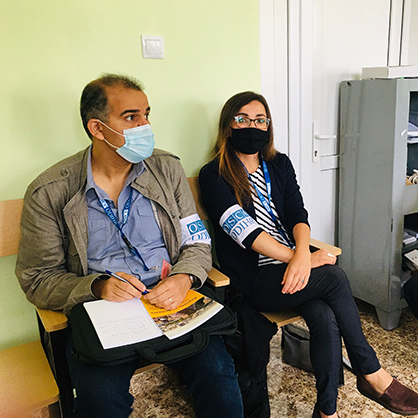
Armenia, located in the area known as the Caucasus, is a great example of a region, where gaining an even basic understanding of current geopolitical realities would require a thorough study of deep-rooted religious and ethnic cleavages going back thousands of years, including colonization, great power contests during both world wars, and the legacies of the Ottoman Empire and the Soviet Union, culminating in the resurgent Russia, China, and Turkey in modern days – and that’s just scratching the surface.
Furthermore, it is important to learn history as it was told and written by a diverse group of historians. It may appear that societies had experienced the same events, but the way they document those events and the stories they tell themselves about them vary greatly. As a result, because different people do not see the past in the same way, they do not see the present problems the same way either.
In addition, people in the position of power often whitewash history and use it as an instrument of control and as a shield against assuming accountability – and punishment – for wrongdoing. If we want to be effective in creating more stable, predictable relationships with other countries, in line with our values and interests, we must study their languages and histories and seek a deeper understanding of their points of view.
The second major theme that I found myself revisiting in my head and one I want to drive home was the extent to which nation-states can use a monopoly on legitimate use of force to commit crimes against humanity in pursuit of power. Extermination of Armenians was an official policy of the Ottoman Empire. That is to say, it was carefully planned and executed by a legitimate government. To this day, governments continue to engage in genocidal practices in the name of power and profit, often by exploiting and disintegrating the very institutions that propelled them to power to begin with.
Before I left the memorial, I recorded a video message for my students in the international relations course I was teaching asynchronously at that time. In my message, I related the Armenian genocide to our class discussion of the U.S.-China relations and the fact that the Chinese government had been engaging in genocidal practices against its Muslim minority population in Xinjiang.
History teaches us that if we turn a blind eye to such egregious crimes against humanity, we will pay a higher price later. As Albert Einstein once said, “The world will not be destroyed by those who do evil, but by those who watch them without doing anything.”
RC: Is there anything else about the mission that you’d like us to share?
OL: It was a great honor to be a part of the OSCE/ODIHR election observation mission. It’s had an immense personal and professional impact on me, and I am thankful to the U.S. State Department and PAE-REACT for the opportunity. I hope to be able to join other missions in the future. I also encourage our students to seek out these opportunities in the future as well.

The Charger Blog
Beatrice Glaviano ’26 shares her take on getting older, the grind of college, and remembering to have a life outside of it all.

University News
The partnership will include student site visits, mentorship opportunities, and course collaborations with the Mets, and the university’s brand will also be showcased in the team’s digital content.

The Charger Blog
Industry sponsors called HackNewHaven a resounding success as students from universities across Connecticut and Massachusetts collaborated, developed tech products, and presented their innovations as part of the student-run hackathon.